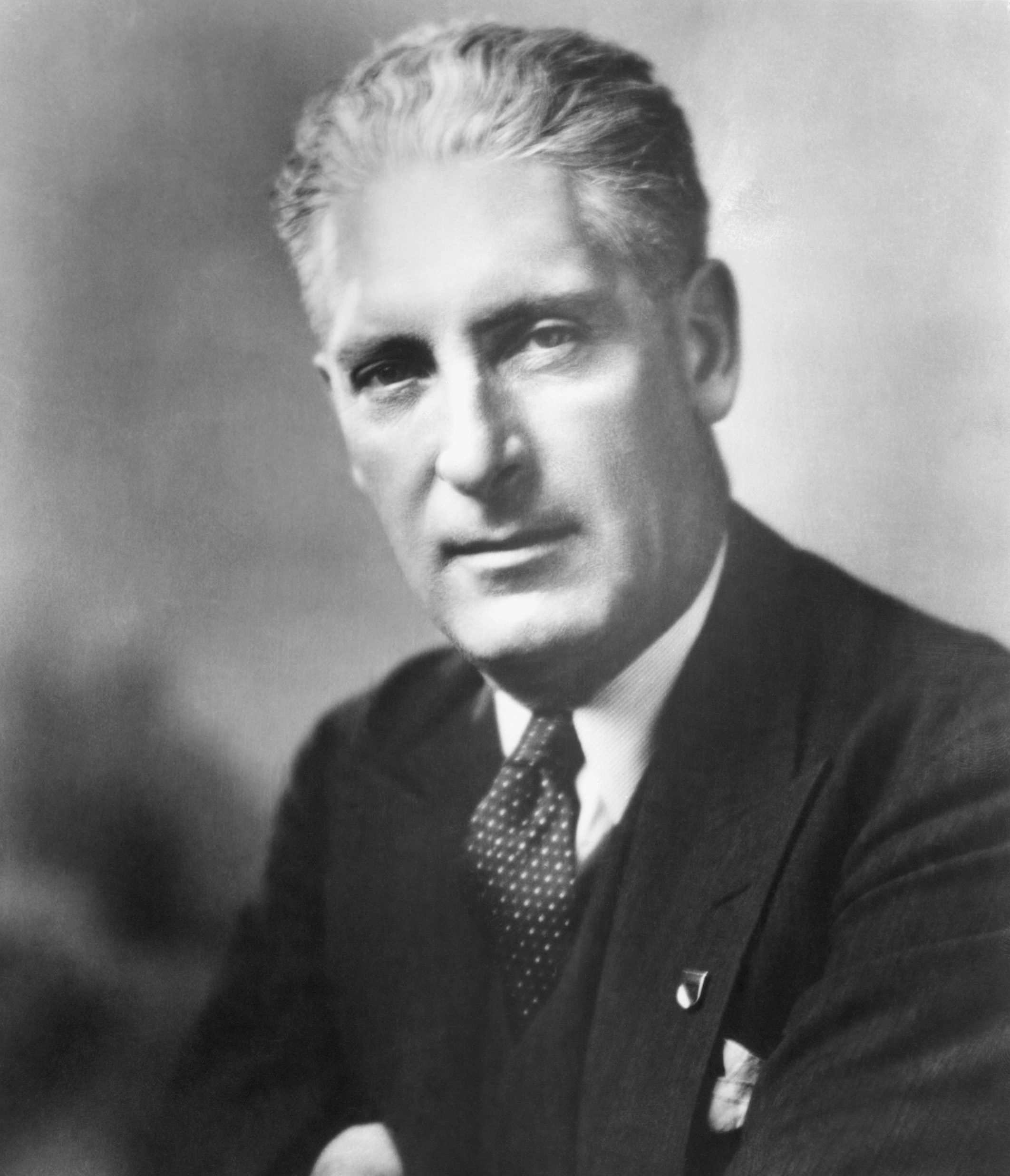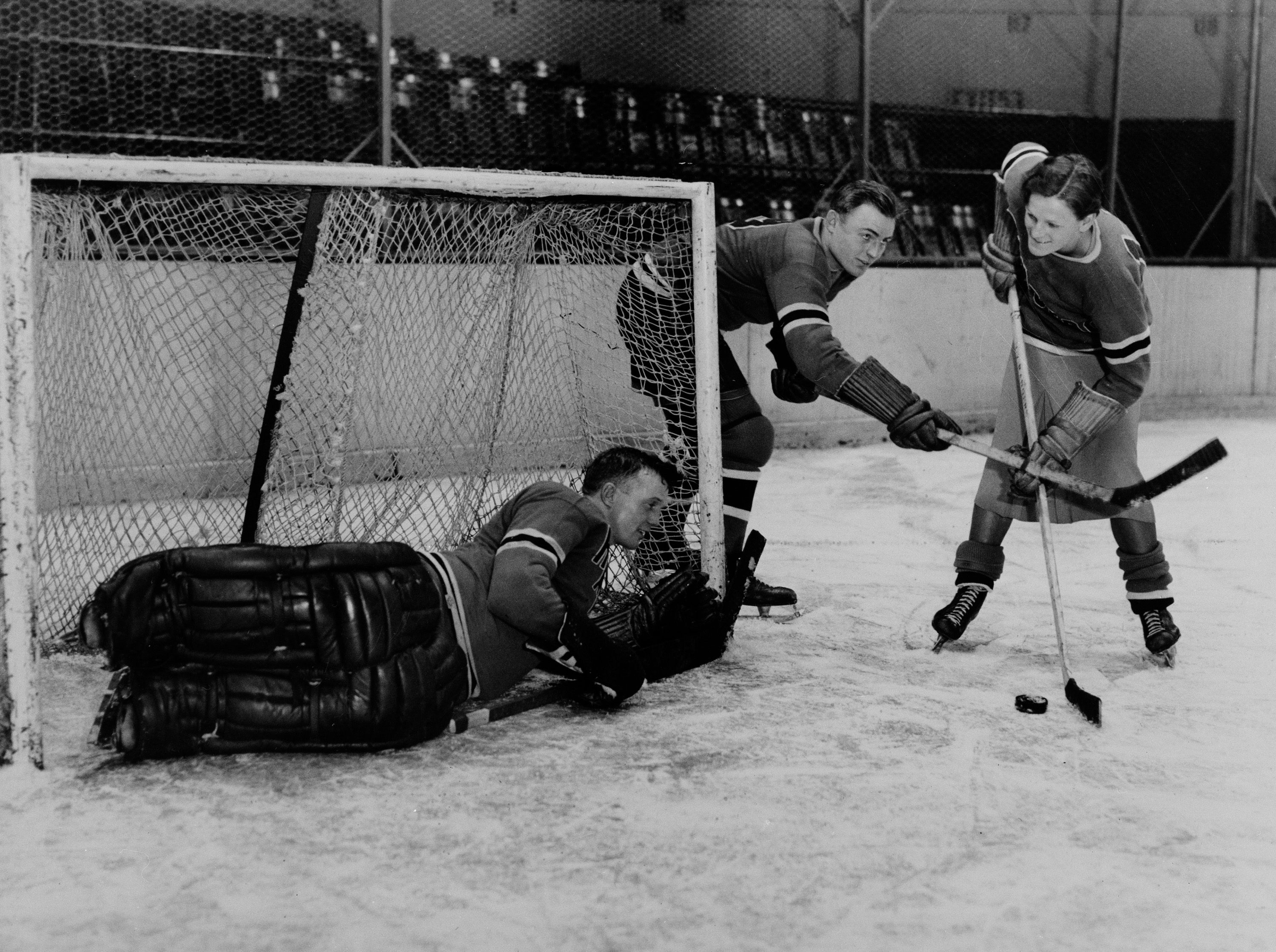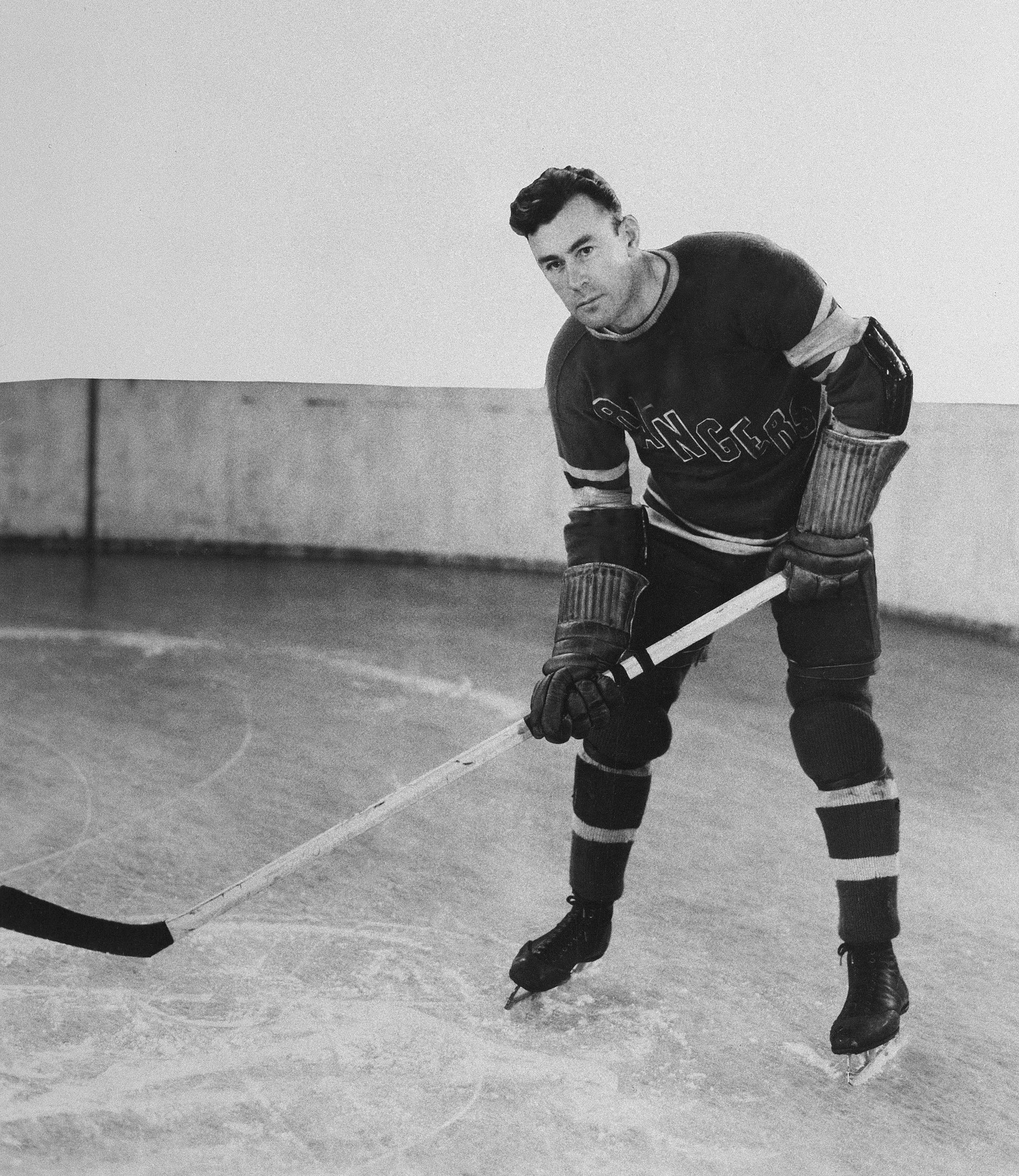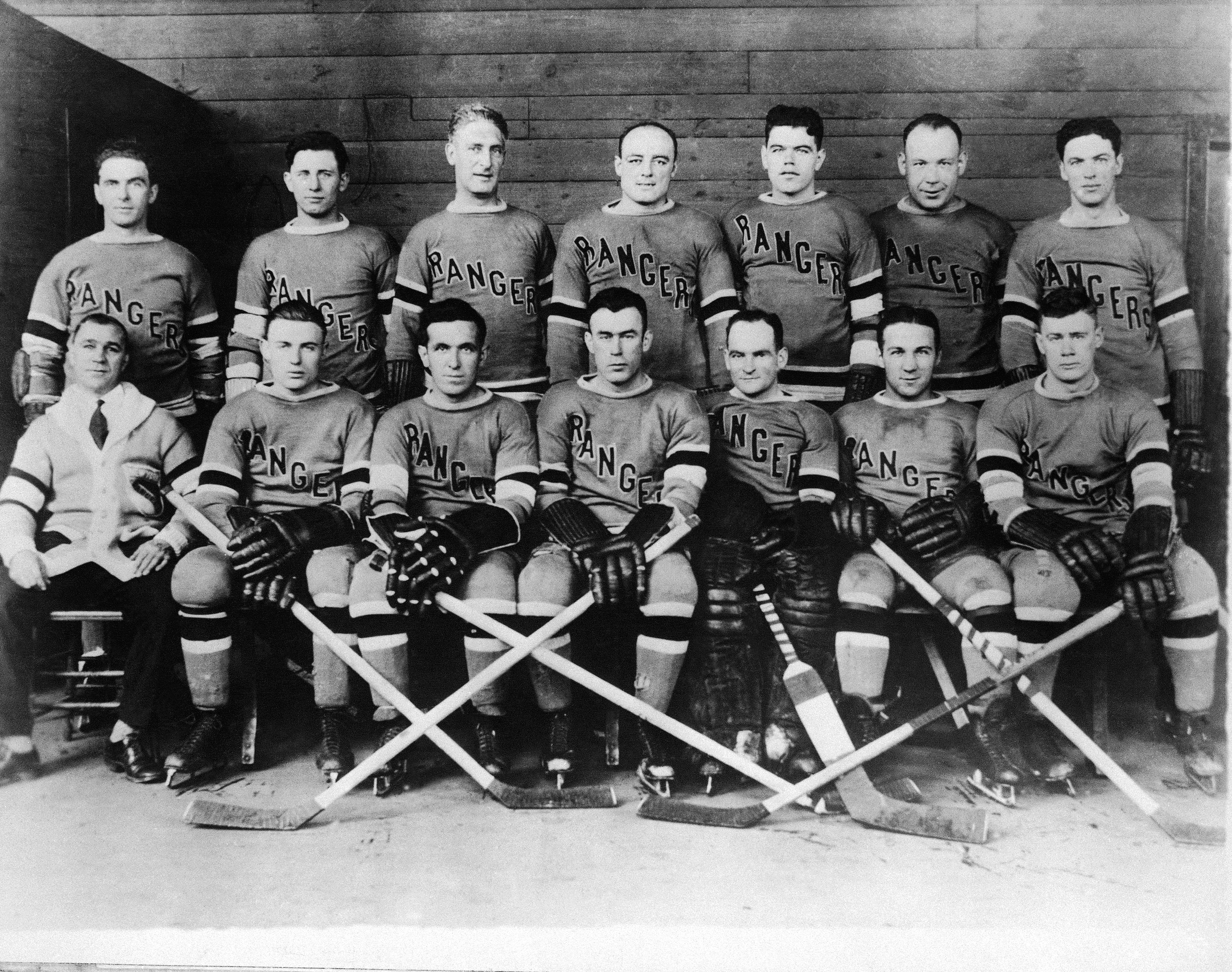If the Rangers first Stanley Cup triumph in 1928 was accomplished with a strange set of goaltending circumstances, the Blueshirts’ second championship five years later had a curious netminding twist as well.
Actually, its roots date back to the 1927-28 season when Lorne Chabot was the Rangers original and dependable puck-stopper throughout the season, as well as the start of the Cup Final against the Montreal Maroon’s.
But a puck fired by Montreal star Nels Stewart smashed into Chabot’s face and nearly permanently blinded him in the second game of the Final. Without a backup goalie, Rangers then manager-coach Lester Patrick himself replaced Chabot and actually won the game. For the remainder of the series, the Rangers employed goalie Joe Miller and won their first Cup.

[READ: The Night Lester Patrick Saved the Rangers]
The hook to the story here is that Patrick refused to re-sign Chabot for the 1928-29 season because Lester believed that the injury permanently diminished the goalie’s ability to regain top form. Patrick traded Chabot to Toronto for the Maple Leafs puck-stopper, John Ross Roach.
As luck would have it — bad luck for the Blueshirts — Chabot, as a Leaf, went on to beat the Rangers in the 1932 playoffs while Roach disappointed.
Searching for a new netminder for the 1932-33 campaign, Patrick departed from form and gambled on an untried rookie with a grand total of no National Hockey League games on his resume. It was as big a gamble as Lester, himself, putting on the pads.

Patrick’s choice, Andy Aitkenhead, was one of the rare goaltenders who was born in Scotland — Glasgow, to be specific. He went up against one of the most experienced goalies in the Stanley Cup Final; none other than defending Cup-goalie, Chabot himself.
In between, Handy Andy made Patrick look good; really good. Aitkenhead was durable, competent and a team-player.
Better still, he inspired veterans such as Ching Johnson, Frank Boucher and the Cook Brothers — Bill and Bun — to play some of their finest hockey, despite their advanced NHL years.
“Andy was an acrobatic young man,” wrote Boucher in his autobiography, When The Rangers Were Young. Boucher added, “He sometimes wore a tweed cap when he played goal.”
But it was more than Handy Andy who would return the Blueshirts to the Stanley Cup. Patrick wanted more offense and made a deal for Montreal Maroons’ sharpshooter Babe Siebert.
A new forward line was formed with Siebert skating alongside Art Somers and Cecil Dillon. Like Chris Kreider on the current Rangers, Dillon was emerging as a formidable scoring threat.
Meanwhile, the Cooks-Boucher line was as good — if not better — than that trio was in the first Cup year. Bill Cook followed up his NHL goal-scoring leader year (1931-32) by winning the league’s 1932-33 scoring championship.

Brother Bunny was runner-up, while Boucher finished fifth in the NHL’s American Division scoring race.
The defense was the equal of the 1928 Cup-winners, led by Ching Johnson who was ably abetted by Earl Seibert — not to be confused with Babe Siebert up front — Ott Heller and Doug Brennan.
Entering the playoffs, New York was formidable to be sure but not one of the favorites. Both Boston and Detroit finished ahead of the Blueshirts in the American Division. They were tied at 58 points with the Rangers four points behind.
Once the post-season began, Patrick’s skaters metamorphosed into a dreadnought. They knocked off the Montreal Canadiens in the first round and Detroit in the following tourney. The only remaining obstacle was the defending Toronto franchise.
Ah, but the hidden form of Lady Luck was smiling on the Eighth Avenue stickhandlers.
“We got the break of all breaks,” Boucher recalled, “because the night before the Leafs came to The Garden for us they had played Boston. The game with the Bruins turned out to be what then was the longest game in NHL history.”
That marathon extended into a sixth overtime period before Toronto’s Ken Doraty scored the winner.
“Right after the game,” Boucher continued, “the Leafs had to climb into their Pullman sleeping car at three o’clock in the morning. By the time they got on the ice to face us in Game One of the Final, they were dead on their skates.”
The Rangers handily beat them 5-1, in the best-of-five series sending the tournament to Maple Leaf Gardens for the remaining games.
The combination of newcomer Babe (Not Earl) Siebert, youthful Ott Heller and Bun Cook scored for New York for a 3-1 win in Game Two.

On the ropes, Conn Smythe’s Leafs rallied for a 3-2 win in Game Three and came excruciatingly close to tying the tourney in Game Four. In fact, the game was tied 0-0 after three regulation periods. Once again, luck helped the Blueshirts.
Ironically, the Cup-winning goal came as a result of a broken play. As the sudden-death period approached the eight-minute mark the Cook-Boucher Line was completing a shift.
Bun had gone to the bench and was replaced by Butch Keeling. Bill Cook and Boucher were about to follow Bunny to the bench when Keeling suddenly snared the puck and noticed that Bill Cook was in a strategic spot along the right boards.
Boucher: “Butch fired a rink-length pass to Bill who, by this time, had switched direction and was heading toward the Leafs net. Bill saw a wide opening at Chabot’s right.”
One of the all-time accurate shooters, Cook knew he had the goalie at his mercy.
“Lorne gave me the whole stick-side,” Bill revealed, “and I just fired for that hole.”
He didn’t miss and the Rangers had won their second Stanley Cup; once again in a Canadian metropolis. But when they returned to Broadway, they received a typical New York hero’s welcome.
Madison Square Garden President, Bill Carey pulled out all stops by hosting what was described as “a sumptuous victory celebration” at the Astor Hotel in the heart of Times Square to fete his champions.
In only the seventh year of the club’s existence, the Rangers had won two Stanley Cups. It would take only seven more years for them to annex their third title. Still, there were seasons of sadness in between.
“That second Cup marked the beginning of the end for our Original Rangers,” Boucher concluded. “Within two years Bill, Bun, Ching, Murray Murdoch and I were spending more and more time watching younger legs carrying the load.”
[More on the Rangers’ 90th Anniversary]
They all would soon retire, while Lester Patrick went about the business of creating yet another Stanley Cup championship team.
Soon, new names such as Lynn and Muzz Patrick, Phil Watson, Dave Kerr and Art Coulter would revive Cup glory in Manhattan!
